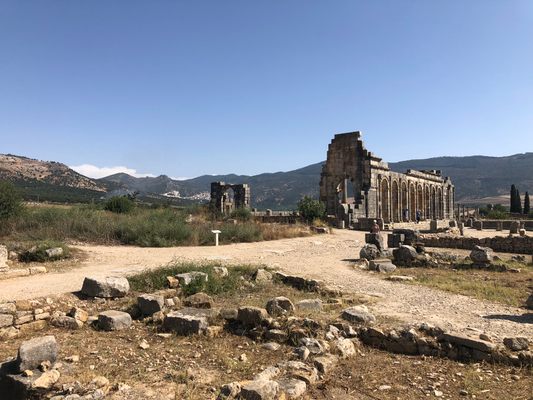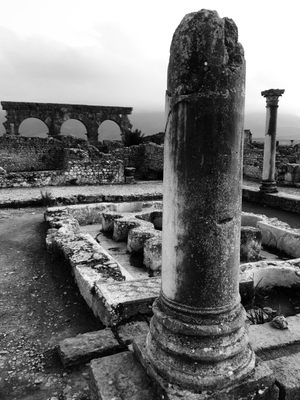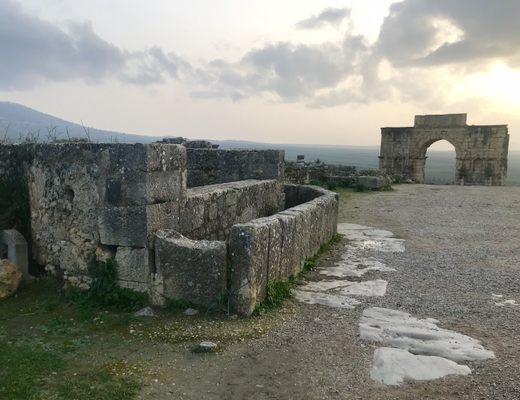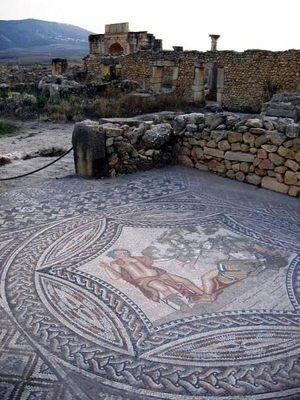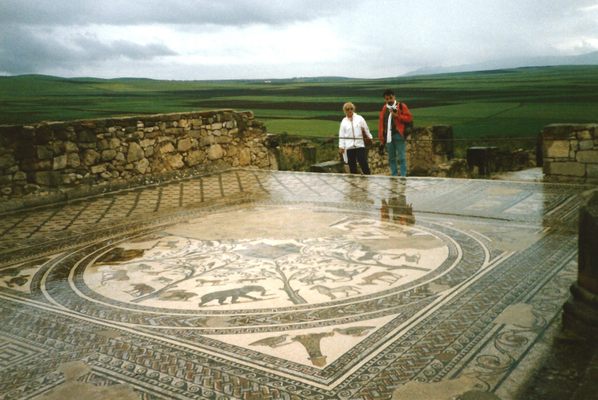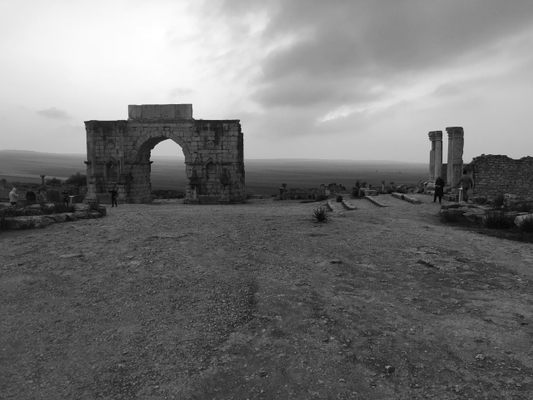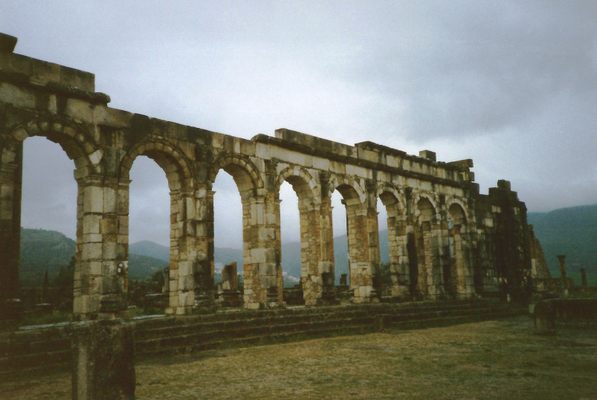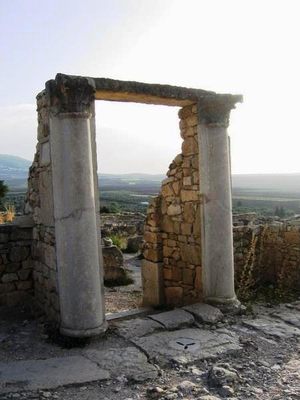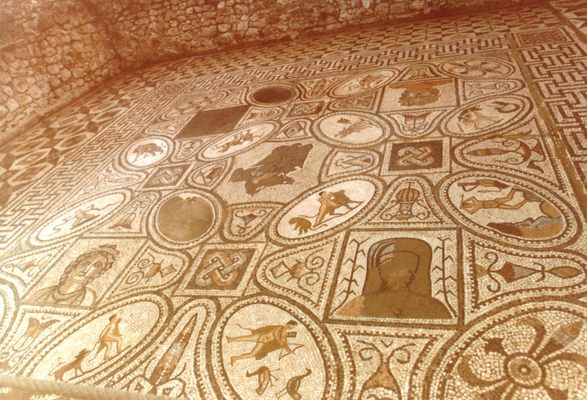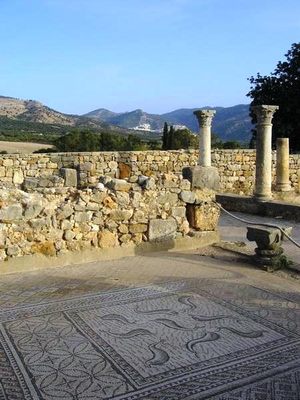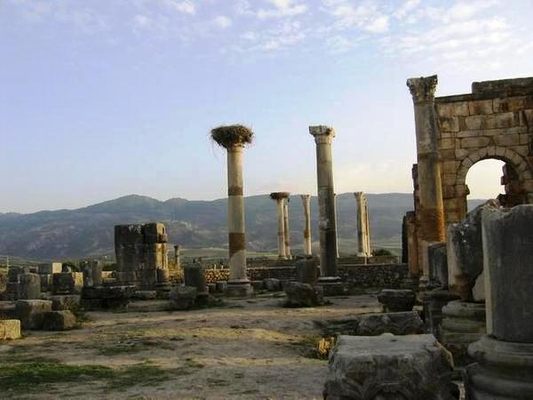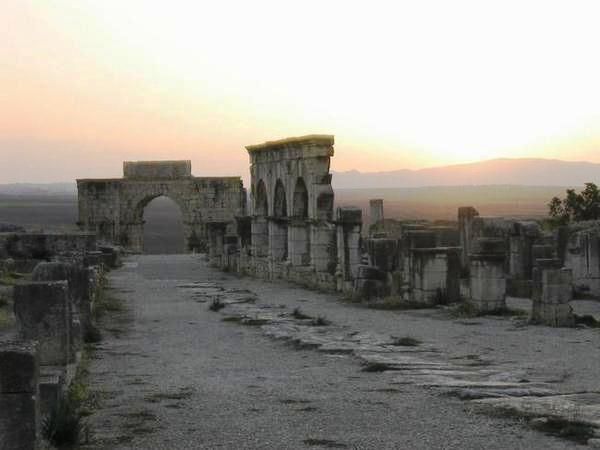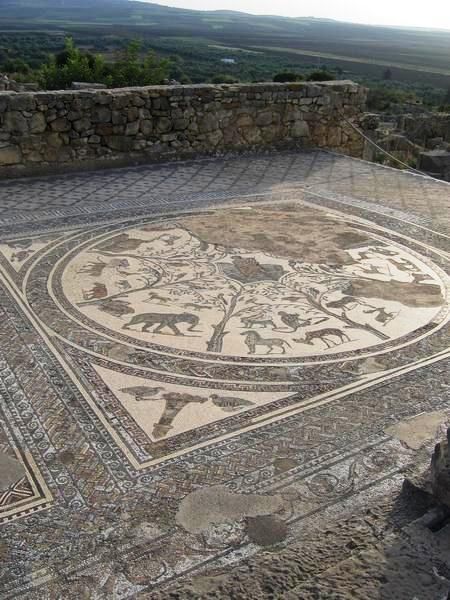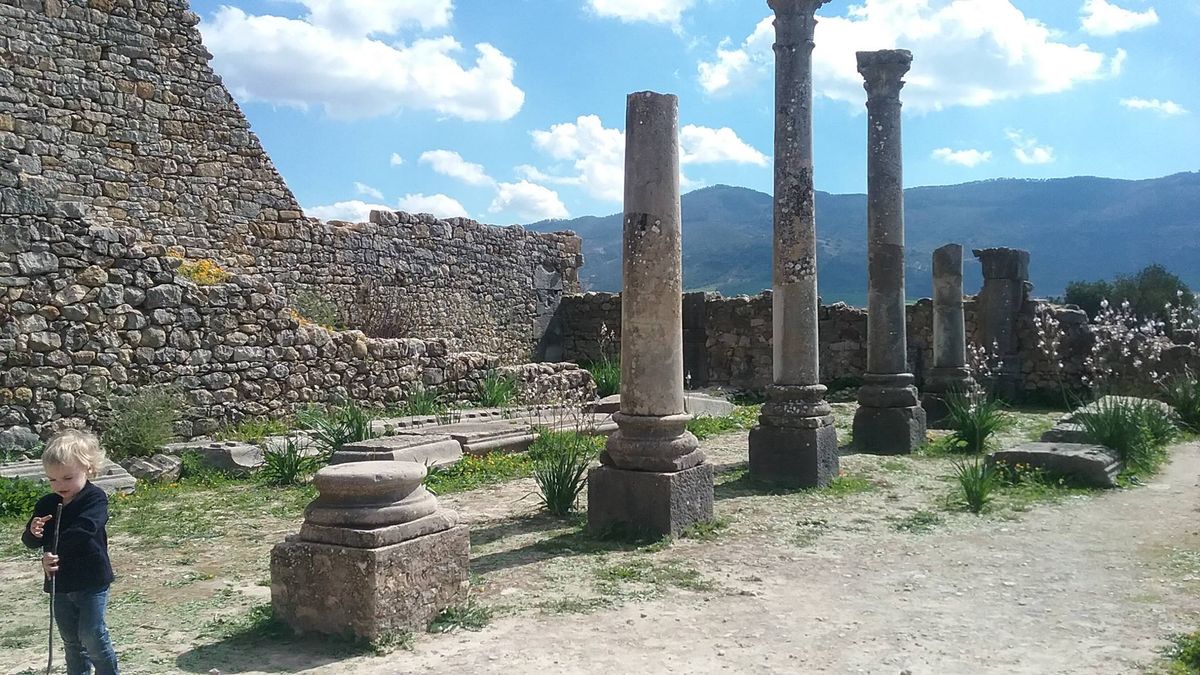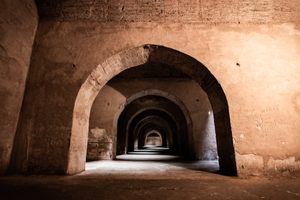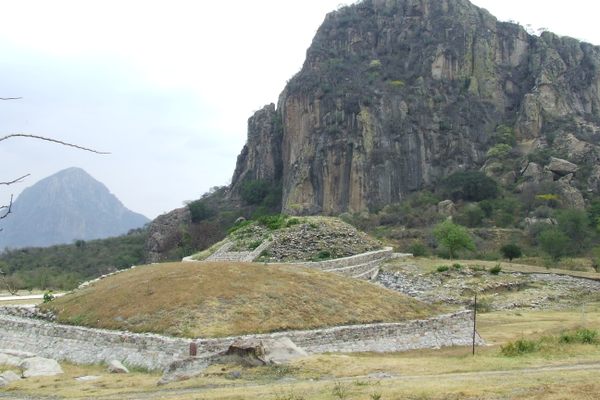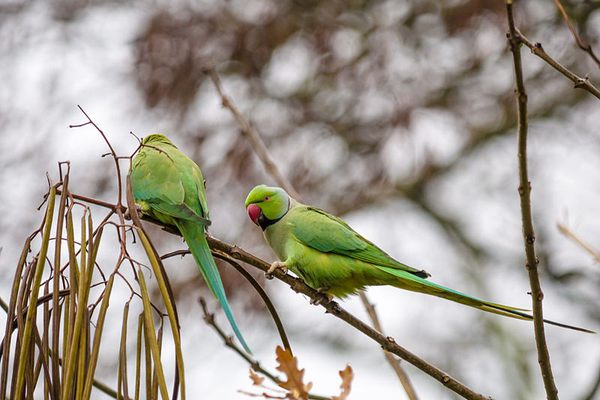About
Built in and occupied since the third century BC, Volubilis had seen its share of residents—Phoenicians, Carthaginians, and Romans—before being taken back by the locals by 285.
The city remained occupied by Latin Christians, then Muslims, then the Idrisid Dynasty, the founders of modern Morocco. In the 11th century, it was abandoned when the seat of power moved to Fez, and the city’s stones were looted for the building of Meknes after a powerful earthquake in the 18th century.
Under French occupation, excavation identified the site officially as the Roman city of Volubilis. The excavations revealed glorious mosaic floors, temples, a basilica, aqueduct, baths, gates, and—as in every good old town—brothels.
Besides the usual Berber men selling postcards and “authentic” Roman coins, the city is now occupied by a new kind of resident: storks. What better place for these large birds to build their bulky nests than atop a Roman column? The smooth sides protect them from any land animal and their size and paternal protectiveness protect them from above. Storks can be seen throughout Morocco, nesting atop monuments.
In 1997, the city of Volubilis was designated a UNESCO World Heritage Site. A quick pit stop there is usually part of a tour package, on the road from Meknes to Fes.
Related Tags
Flavors of Morocco: Souks, Spices & Saharan Stars
A Moroccan Culinary Adventure from Marrakech to Essaouira.
Book NowCommunity Contributors
Added By
Published
November 6, 2013
